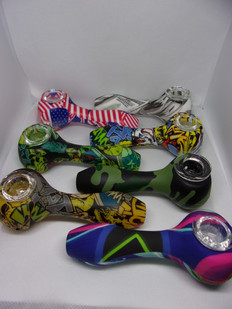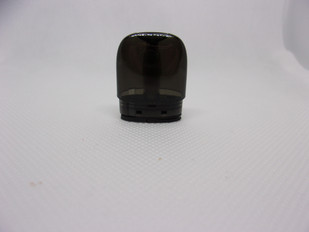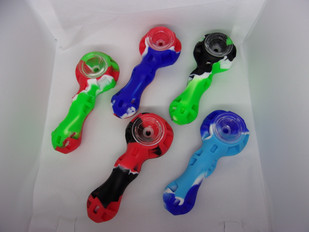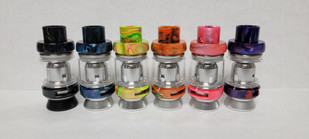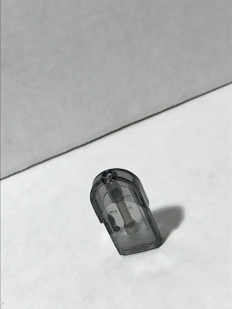- Home
- The Vape Mall Blog
- CBD 101 Lesson: How Exactly is CBD Made?
CBD 101 Lesson: How Exactly is CBD Made?
Posted by on
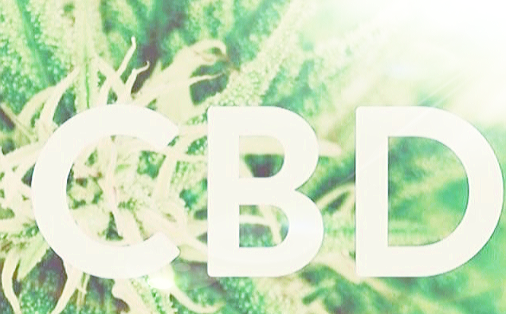
The CBD industry is worth hundreds of millions of dollars and doesn’t seem to be slowing down in the near future. By now, much of the general public is at least vaguely aware of this cannabinoid’s variety of potentially therapeutic properties that range from anxiety relief to relief from headache pain. Despite the fact that so many of us know about how CBD works, few of us know how it’s made.
The truth is that the way in which a CBD product is made is nothing short of fascinating. You don’t have to be a plant chemist to appreciate the many things that make this process exciting. Besides, knowing about how it’s made can help you better figure out which types of products to look out for.
It All Starts with the Hemp Plant
CBD is a cannabinoid that exists in both the hemp plant and the marijuana plant, two members of the cannabis family. But, because commercial CBD comes from the hemp plant, that’s what we’ll be focusing on. You see, hemp contains 0.3 percent or less THC, the psychoactive compound that allows marijuana to make people feel high. Therefore, CBD that comes from the hemp plant won’t give you any mind-altering effects. Because THC is what makes marijuana illegal, CBD companies use the hemp plant instead.
The hemp plant is cultivated by a farmer who takes great care to ensure that the soil is free of pesticides and herbicides. Since CBD is ingested, we don’t want any of those chemicals getting into our bodies. Once the hemp plant matures, it’s picked out of the ground. CBD comes from the leaves and stalks of the hemp plant because this plant, unlike marijuana, does not produce any flowers. An interesting fact is that hemp is a male plant while marijuana is its female counterpart.
It’s also worth pointing out that up until recently, hemp cultivation was illegal in the United States. Only recently did the federal government allow it to be grown for research purposes. However, a new law will make cultivation legal for commercial purposes as well.
The Extraction Process is Key
Once the hemp plant has been picked from the ground, it goes through an extraction process so that CBD can be turned into an oil. It’s widely believed that the best extraction process by far is the CO2 method. This process involves applying carbon dioxide to the plant material by way of pressure. It best preserves the chemical structure of the plant so that its many compounds retain their healing properties.
However, there are other extraction processes. One involves using chemical solvents to break down the plant so that it can be easily infused into a carrier oil. This method is not recommended as it can weaken the potency of the CBD and the other beneficial compounds. Always check a company’s website to learn how their CBD has been extracted.
There are three different types of CBD, and they differ based on the extraction process.
- Full Spectrum: Contains every compound in the hemp plant. No compounds are removed from the resulting oil. In addition to CBD, the hemp plant contains terpenes that have healing properties.
- Broad spectrum: Contains every compound except THC. Despite the fact that the THC in hemp is not abundant enough to make the user high, some people still like to avoid it.
- CBD Isolate:Pure CBD without any other compounds in the plant. CBD on its own has been found to be beneficial, although some believe that the other compounds provide the body with additional healing benefits, so they prefer full or broad spectrum.
To Decarb or Not to Decarb, that is the Question
Next, we get to the decarboxylation process. This is just a fancy term for applying heat to the CBD oil. This process activates certain compounds so that they become more bioavailable. In other words, once they’re activated, the body can better absorb them and use them.
However, some companies don’t put their CBD through this process. CBD that has not been decarboxylated is known as “raw.” Some believe that the decarboxylation process destroys the healing properties of certain compounds in hemp. Additionally, this type of CBD is less potent because the body does not absorb it as easily.
Time to Test
Now that the CBD oil has been extracted and decarboxylated, it’s tested for potency and purity. Any respectable company will send their CBD off to a third-party lab so that it can be tested from an unbiased perspective. The lab results will come back, showing the level of CBD present, the terpene profile and the potential presence of impurities like heavy metals and pesticides.
This test also allows a person to determine the strain of CBD. Each strain is determined by the terpene profile as well as the level of cannabinoids present. Different strains are believed to have different therapeutic effects on the mind and body.
Let’s Make a CBD Product
Now that the CBD oil has been tested, it can be turned into a product for commercial use. There are many different types of CBD products on the market today that each offer their own unique advantages and disadvantages We’re just gonna focus on the major ones.
- Oral Tincture: Combines CBD oil with a carrier oil. It’s poured under the tongue and left there to absorb into the tissue of the mouth. It provides long-lasting effects. Often, the carrier oil is MCT oil or grapeseed oil.
- Vape Oil: Combines the extract with propylene glycol, vegetable glycerin and, usually, flavoring additives. It’s used with a vaping device so that it’s inhaled into the lungs. While the effects don’t last as long, they are felt very quickly.
- Edible: Any edible product that’s infused with CBD extract that can be properly digested.
- Topicals: Unique in that they’re not consumed internally. A CBD cream, lotion or salve is combined with different oils and emulsifiers so that it can be easily applied to the skin. It absorbs through the skin’s layers quickly, entering the affected tissue within a half hour or so. Best for someone trying to treat localized pain or a skin-related ailment.
Having a New-Found Trust in the Process
The process of turning hemp into an easy-to-use CBD product is definitely interesting. And, now that you understand what goes into making it, you can have a better idea of why some hemp companies make higher-quality products than others.
 Loading... Please wait...
Loading... Please wait...



